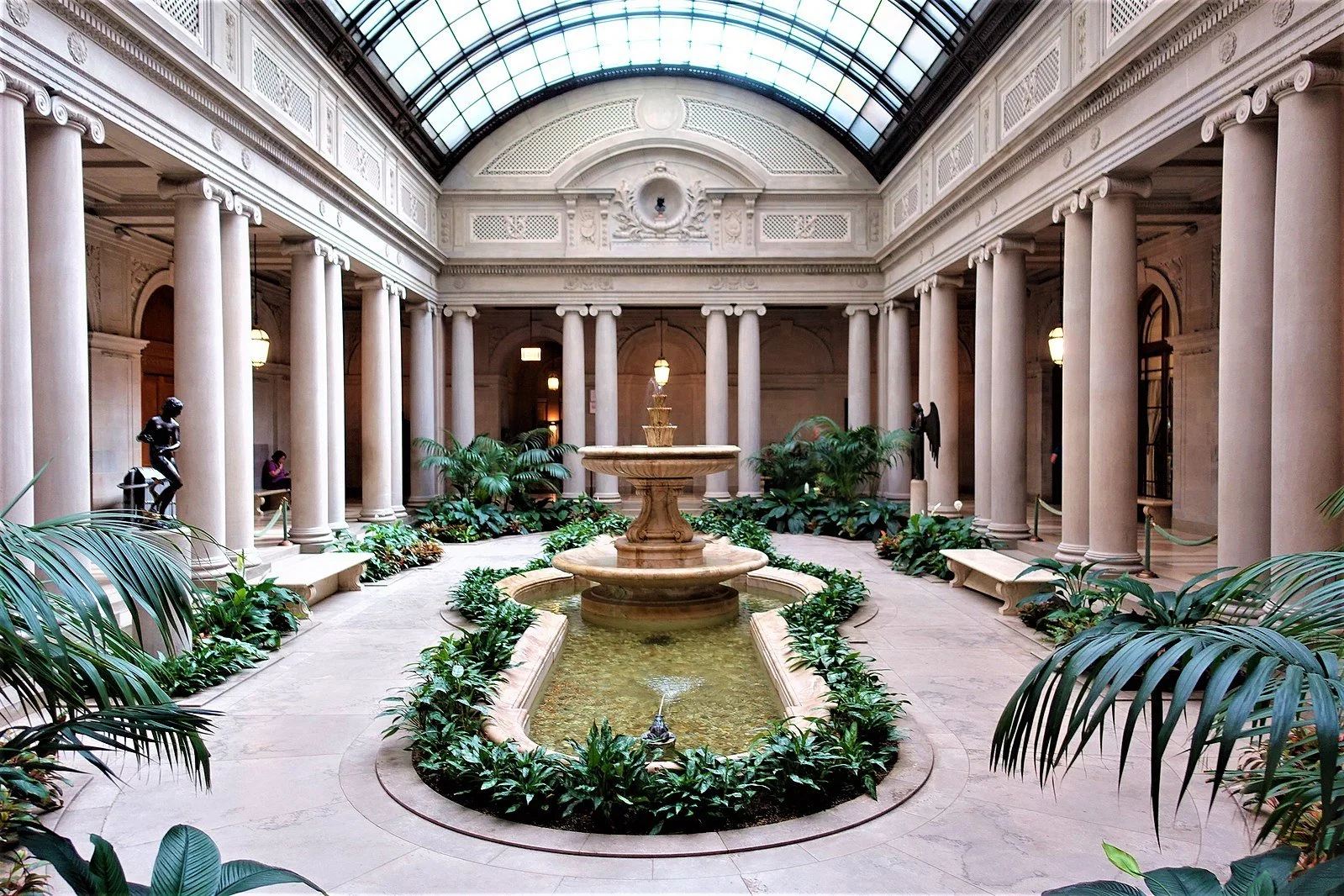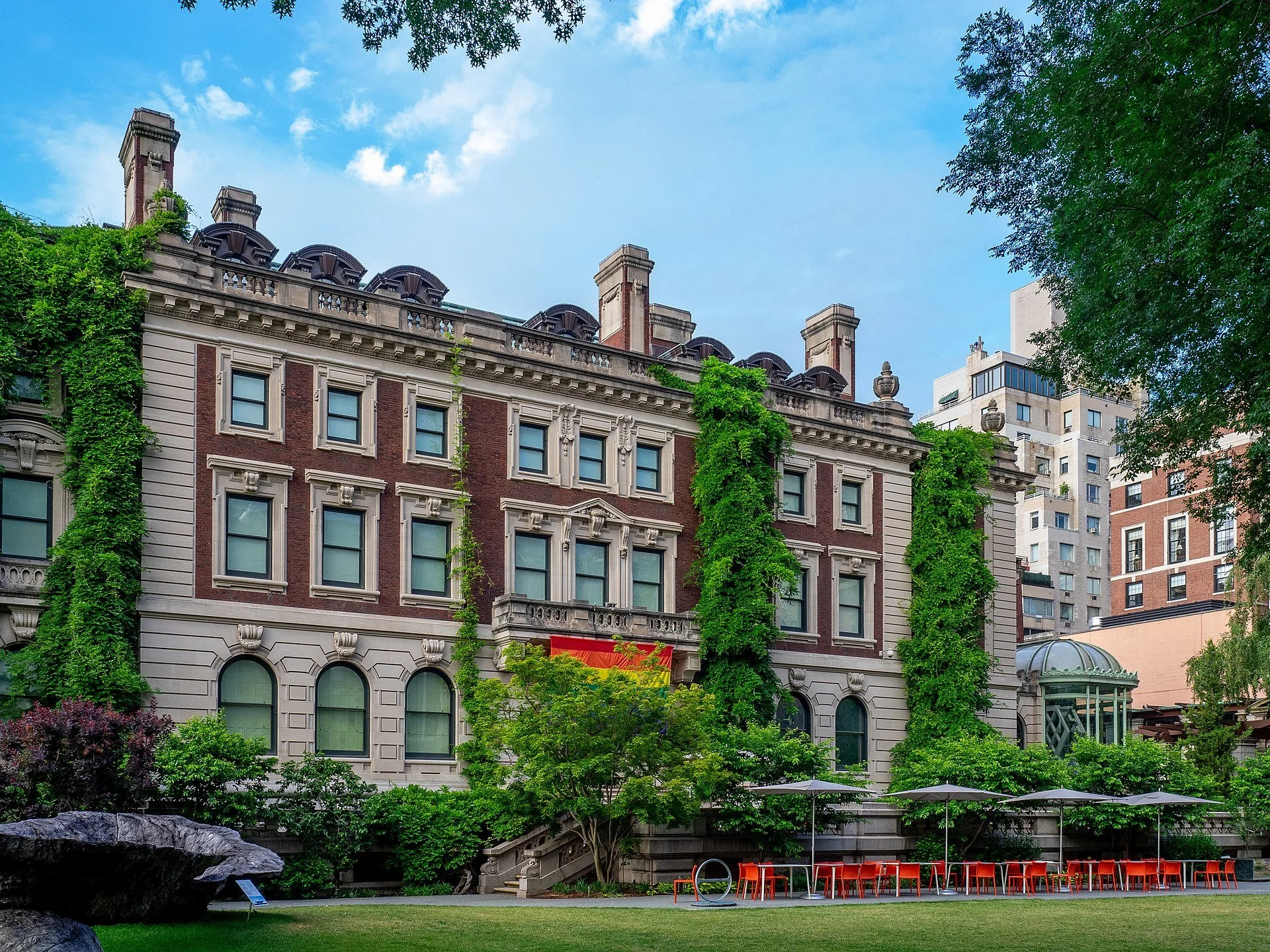5 Of The Most Expensive Mansions In NYC
New York City is home to some of the most luxurious and historic mansions in the world. Each one has a unique story and a rich history that has shaped the city's cultural landscape. In this article, we will take a closer look at five of the most iconic mansions in NYC: Frick Mansion, Cartier Mansion, Ukrainian Institute, Carnegie Mansion, and The Morgan Library.
Source: Wikimedia Commons, Photo by Joyofmuseums/ CC BY 4.0
The Frick Mansion
The Frick Mansion, located at 1 East 70th Street, is a Gilded Age mansion built for industrialist Henry Clay Frick in 1914. This Upper East Side mansion is now home to The Frick Collection, one of the most prominent art museums in the city. The museum's collection features works by some of the most renowned artists in history, including Rembrandt, Vermeer, and Renoir.
A true architectural gem, the Frick Mansion, a splendid creation of Thomas Hastings from the renowned Carrère and Hastings architectural firm, stands as a resplendent monument to the Gilded Age. Notably, the same firm was responsible for crafting the iconic design of the New York Public Library's main branch, solidifying their legacy in shaping the city's architectural landscape. Designed with meticulous attention to detail, the mansion is a symphony of exquisite craftsmanship, capturing the essence of opulence and grandeur that defined an era.
Elegantly adorned with ornate decor and intricate embellishments, the Frick Mansion's facade exudes a timeless aura that beckons visitors to step inside its storied walls. The mansion's grand staircases, like sculpted masterpieces, guide visitors through its hallowed halls, offering a glimpse into a bygone era of aristocratic living. The pièce de résistance lies not just in its architecture but also in the masterpieces that grace its rooms — a collection of priceless art that rivals the opulence of the mansion itself.
What began as the private residence of industrialist and art collector Henry Clay Frick has evolved into a cultural epicenter that captivates and educates. The Frick Collection, harbored within these walls, showcases a breathtaking array of paintings, sculptures, decorative arts, and more, spanning centuries of human creativity. This transformation from private abode to revered institution highlights the enduring value of art in enriching society. As visitors wander through the Frick Mansion, they traverse not only the legacy of its original owner but also the crossroads of history, culture, and artistic innovation that continue to inspire and captivate audiences from around the world.
Source: Squarespace/Unsplash
The Cartier Mansion
Once a stately residence, the Cartier Mansion at 653 Fifth Avenue stands as an emblem of a fascinating historical journey. Originally known as the Morton F. Plant House, this architectural masterpiece was envisioned and brought to life by the ingenious architect Robert W. Gibson, its completion in 1905 marking a milestone in New York's architectural landscape. This majestic mansion, with its grandeur and elegance, has undergone a captivating transformation, evolving into the prestigious domain of the renowned jewelry brand, Cartier.
In 1917, a momentous exchange occurred when Pierre Cartier, the visionary founder of the Cartier legacy, made a bold move to secure the mansion for his brand's enduring legacy. For a mere $100 in cash and the alluring allure of a double strand of natural pearls valued at a staggering $1 million, Cartier acquired the residence. This historic transaction not only solidified Cartier's presence in the heart of New York City but also embarked on a journey of luxury, heritage, and innovation.
Today, the Cartier Mansion continues to enchant and inspire, offering visitors a glimpse into the opulent world of fine jewelry and exceptional craftsmanship. The mansion's interiors still echo with the echoes of history, as the grand staircase invites guests to ascend into a realm of refined beauty and sophistication. A crystal chandelier illuminates the space with its timeless radiance, setting the stage for remarkable displays that tell the story of Cartier's exquisite creations.
The mansion's most iconic feature, the vibrant red awnings, stand as a beacon of luxury on Fifth Avenue, drawing in passersby and capturing the essence of Cartier's timeless elegance. As visitors step through the building’s doors, they embark on a journey that intertwines the mansion's storied past with Cartier's legacy of innovation and creativity, resulting in an unparalleled experience that merges history, art, and luxury.
Source: Squarespace/Unsplash
The Morgan Library
The Morgan Library & Museum is a cultural institution located in the heart of Manhattan in New York City. It was originally the private library of financier and collector J. P. Morgan, and was opened to the public in 1924. The museum has a vast collection of rare books, manuscripts, drawings, and other materials, ranging from medieval times to the present day.
The library is housed in a beautiful Italian Renaissance-style building designed by architect Charles Follen McKim, which was completed in 1906. The interior of the library is just as impressive, with ornate ceilings, marble floors, and rich wood paneling throughout. Some of the highlights of the collection include the original manuscript of Charles Dickens' "A Christmas Carol," several Gutenberg Bibles, and drawings by artists such as Michelangelo and Leonardo da Vinci.
Today, the Morgan Library & Museum is not only a research institution, but also a popular destination for visitors to New York City. The museum hosts a range of exhibitions throughout the year, showcasing different aspects of its vast collection, and also offers a variety of programs and events for visitors of all ages. Whether you're a bibliophile or just interested in exploring the rich cultural history of New York City, the Morgan Library & Museum is definitely worth a visit.
Source: Wikimedia Commons. Photo by Ajay Suresh/ CC BY 2.0
The Carnegie Mansion
Nestled within the prestigious enclave of East 91st Street, the Carnegie Mansion stands as an architectural testament to the opulence of its former owner, Andrew Carnegie, a prominent figure in the annals of American history and industry. Designed by the esteemed architectural firm Babb, Cook & Willard, renowned for their contribution to the iconic New York Public Library's main branch, the mansion's creation was a harmonious union of visionary design and opulent execution.
The mansion's Beaux-Arts style is a symphony of architectural splendor, with its facade adorned in ornate decorations, exuding an air of refined sophistication. Upon entering, visitors are greeted by grand staircases that spiral upwards, each step echoing the elegance of a bygone era. Marble columns rise like sentinels, casting an air of timelessness that transcends the years. Every corner of the mansion is a testament to the meticulous craftsmanship of its builders, creating an environment that seamlessly melds art and architecture.
In a twist of fate, the mansion's journey would take it from the residence of an industrial magnate to becoming the home of the Cooper Hewitt, Smithsonian Design Museum. Purchased by the museum in 1925, the mansion now houses one of the world's preeminent collections of decorative art and design. This transformation echoes the cyclical nature of history, where a sanctuary of opulence has become a sanctuary of creativity, education, and inspiration. As visitors step within its storied walls, they traverse not only the legacy of Andrew Carnegie but also the diverse narratives of design, culture, and human ingenuity that continue to shape our world.
Source: Ukrainian Institute of America
The Ukrainian Institute
The Ukrainian Institute, located at 2 East 79th Street, is a Beaux-Arts mansion designed by architect Charles B. Meyers in 1898. The mansion was built for the Payne Whitney family, who made their fortune in the oil industry.
In 1955, the mansion was purchased by the Ukrainian Institute of America, a non-profit organization dedicated to promoting Ukrainian culture and heritage in the United States. The mansion's stunning interior features marble columns, crystal chandeliers, and a grand staircase. The Ukrainian Institute also features an impressive art collection, with works by Ukrainian artists from the 19th and 20th centuries.
The building is designated as a National Historic Landmark and protected as a contributing element of the New York Metropolitan Museum Historic District. The development of this district as an elegant residential area was related to Fifth Avenue’s long boundary with Central Park. The Metropolitan Museum, set in the park, has provided a dignified urban focus for the district for more than a century.
Brownstones from the 1880s retain a flavor of old New York, while private mansions in Italian Renaissance Revival, French Renaissance Revival, and French Classical styles were built between the turn of the century and World War I for such families as the Whitneys, Brokaws, and Vanderbilts. The grand apartment houses, built after the 1923 repeal of a law limiting Fifth Avenue buildings to a height of seventy-five feet, are as distinguished as the mansions they replaced.






